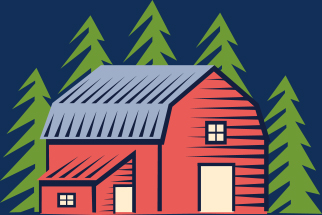Wiring Your Outdoor Shed
Posted By Cathy Scholes On 10-10-2018
From landscaping equipment to pool supplies, a outdoor shed is a perfect place to store your outdoor valuables. These garden structures are a beautiful addition to any backyard. But did you know they can be transformed from a simple storage facility into a truly useful space? By wiring it for electricity, you can convert your shed into an artist’s studio or a versatile workshop. Electricity allows you to do more in your outdoor shed like:
- Work on hobby projects in evening with well-placed lighting fixtures
- Plug in your laptop or recharge your cell phone with wall outlets
- Get access to the web by hooking up an internet modem
- Keep the shed warm by plugging in a space heater during the cooler months
Although you may want to hire a professional electrician, it is possible to wire a shed yourself. Be sure to consult with your municipality’s building codes and to take all safety precautions when handling electrical material. If you’re the handy type, a DIY project like this can save you lots of money and give you the outdoor shed you’ve always dreamed of.
Step 1: Make a list of materials needed
Before you begin, it’s important to gather all the materials necessary. All items can be purchased from your local home improvement store:
- Direct burial wiring or liquid-tight conduit
- Electrical wire
- Switch box
- Light fixtures, switches, wall outlets
Step 2: Choose the right conduit
Be sure to purchase a liquid-tight conduit that can be buried underground and is suitable for outdoor use. These conduits are covered by resistant plastic. Find out if your municipality has a code regarding buried electrical lines. Your conduit will most likely be laid between 18-24 inches below ground. The good thing is that you do not have to worry about frost lines because you are dealing with electricity and not water. Be sure to measure the distance between your house and shed so you’re purchasing the length of conduit you will require.
Step 3: Insert wire into the conduit
For most wiring projects, the best wire to use is a type 12-2. It is usually against code to use sheathed wire inside a conduit. So make sure you’re pulling three unsheathed wires inside the conduit using an electrician’s fish tape.
Here are the three wires you’ll be handling:
- Black for the ‘live wire’
- White for the neutral
- Green or uninsulated for the ground
If you’re finding it tough to pull the wires through the conduit, there’s a clear lubricant you can use to make it easier. Just make sure the lubricant has fully dried before connecting to the main electrical box.
Step 4: Install the switch box
For safety reasons, the switch box should always be located inside your home and not in the shed. If you need to switch off power to the shed, the underground wire outside the home will not be energized. You can also shut down the electricity for longer periods of time, say during vacation, with a simple flick of the switch from inside your home. One end of your conduit will be connected to this switch box. This box will then be connected to your home’s electrical panel.
Step 5: Dig the trench
The next step is to dig a trench to bury the liquid-tight conduit. As mentioned earlier, your conduit will most likely be buried between 18-24 inches below ground. The distance from your home to your outdoor shed could be more than 50 feet, which is a tiresome length to dig. If your budget allows for it, consider renting a trencher to get the job done quickly and easily. But if cost is an issue, you may have to dig by hand. Should you encounter big rocks along the way, you may have to patiently dig around it.
Step 6: Build a panel for the shed’s electrical components
Once your conduit has been buried, it’s time to do some work in the actual shed. Consider building a panel to keep all your electrical components in one convenient area. After deciding on a space, use a couple of 2x4s and a wooden board to make a panel. This is where your junction box, electrical outlets and light switches will be contained.
Step 7: Connect the circuit
One of the final steps is to connect the liquid-tight conduit to the switch and the main box, which are located in your home. The best way to do this is to bring the conduit through a window. Drill a hole in the window frame using a spade bit that’s big enough for the conduit to fit through. By connecting the circuit to your switch box, you can turn off the electricity in the shed when not in use for prolonged periods of time.
By wiring your shed, you can perform a variety of tasks that otherwise would not have been possible. Whether you’re looking for a large 12×10 structure with all the bells and whistles or a smaller single slope addition to your garage, a wooden shed is an excellent investment that will provide practicality and enjoyment for years to come!
For more information on wiring your shed for electricity, please call In The Back Yard at 1-844-208-8425 or contact us here.
 0 Comment
0 Comment

